Bathhouses are facilities that offer multiple hydrothermal amenities for their guests’ use, such as saunas, steam rooms, hammams, cold rooms, and different temperature soaking opportunities. Using these amenities can provide numerous health benefits when used properly.
Here are some tips for using the bathhouse as part of your healthcare routine:
- Hydrate: It's essential to drink plenty of water before and after using a bathhouse. The heat and steam cause you to sweat, so you want to ensure you're well-hydrated beforehand and replenish your fluids afterward.
- Start slow: If you're new to bathhouses, start with shorter sessions at a lower temperature. Gradually work your way up to longer sessions and higher temperatures as your body adjusts.
- Practice good hygiene: Before entering the bathhouse, shower thoroughly to remove any dirt or sweat. Bring a towel to sit on, and use another to wipe away any sweat. Avoid using any scented products. The ritual of cleaning and washing the body before using the bathhouse speaks to the deeper purpose of your visit. You enter clean so your body can assimilate the hydrothermal effects.
- Relax: Bathhouses can be an excellent way to reduce stress and promote relaxation. Take deep breaths, focus on breathing deep into the abdomen, and let your mind and body unwind.
- Be mindful of health conditions: If you have any health conditions, such as high blood pressure or heart disease, consult with your doctor before using a bathhouse. Pregnant women, individuals with respiratory conditions, and those with open wounds should also avoid bathhouses. Hydrothermal and biophysical therapies can be effectively used in these types of advanced conditions, but must be done so under the supervision of a properly trained physician with a specialty in this type of treatment.
Hydrothermal therapy is a type of medicine that uses water and varying temperature applications to promote healing. It involves the use of hot and cold water in various forms such as hot springs, bathhouses, saunas, and contrast hydrotherapy to treat physiological dysfunctions and promote general well-being.
Hot springs, for example, contain high mineral concentrations, including magnesium, potassium, and calcium, which are thought to have therapeutic benefits for conditions such as arthritis, back pain, and skin conditions. Saunas and bathhouses use dry heat or steam to induce sweating and promote detoxification.
Contrast hydrotherapy involves alternating between hot and cold water, which is thought to improve circulation and stimulate the immune system. This therapy is often used to alleviate pain, improve joint mobility, and reduce muscle soreness.
Overall, hydrothermal therapy promotes relaxation, relieves stress, and improves the systems of health in the body
